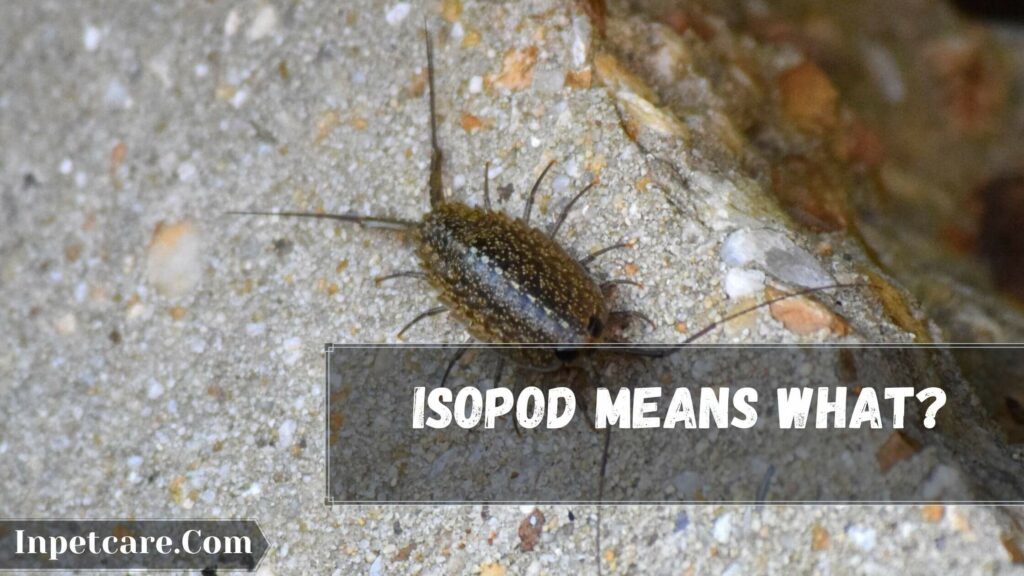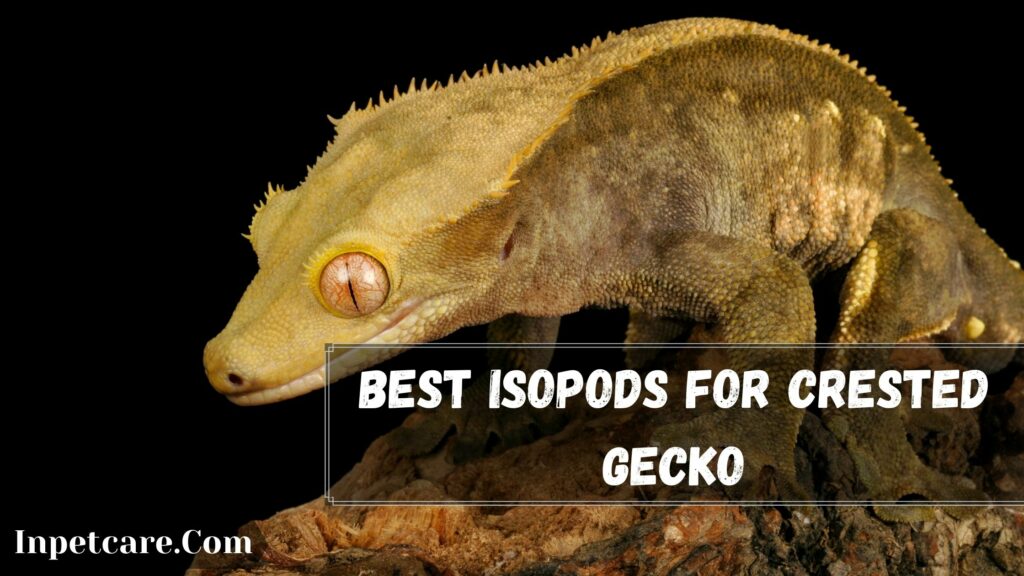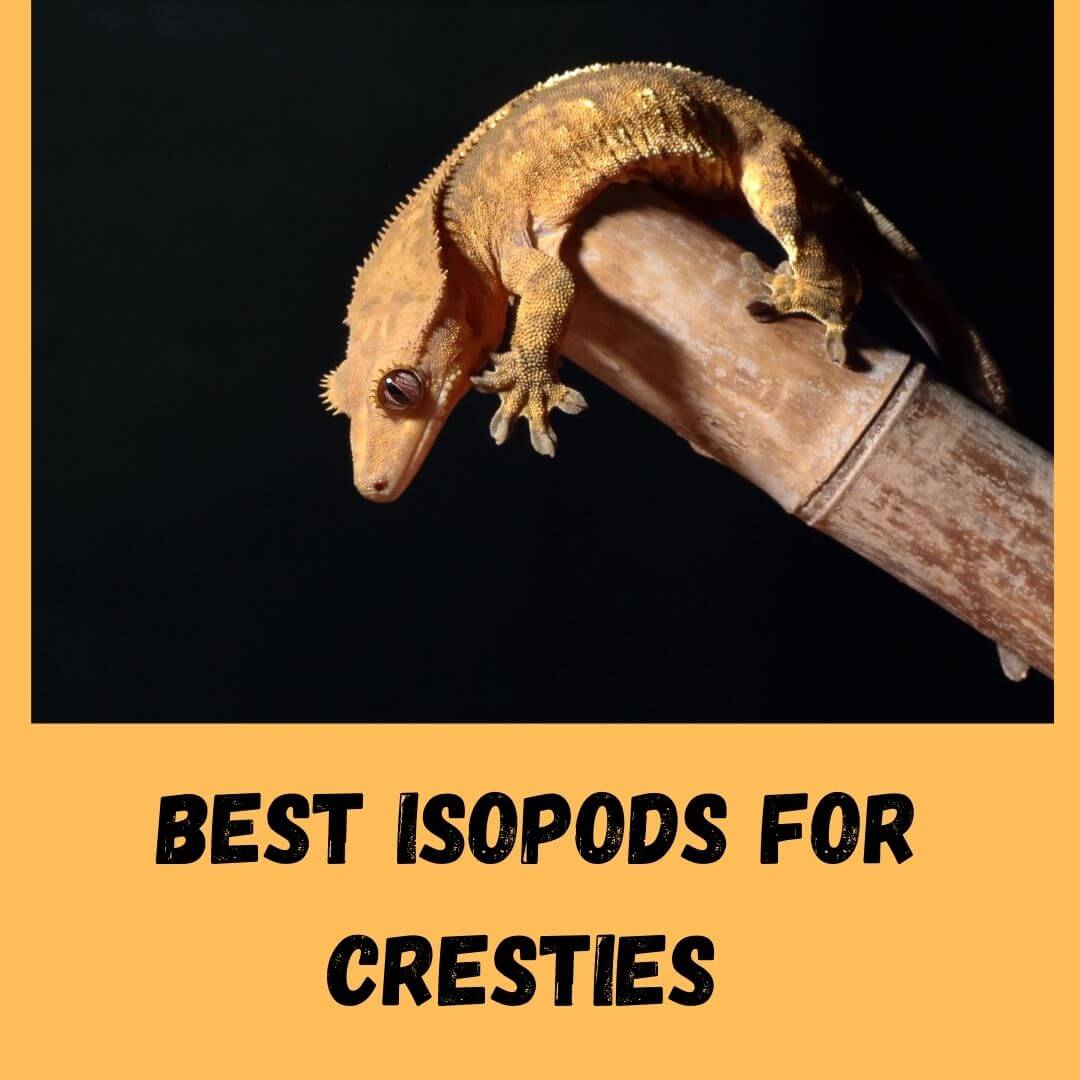Crested Geckos are one of the most beloved pets of lizards found in the wild. Crested Gecko owners often ask what isopod is best suited to the situation of Crested Geckos. Isopods make up a large portion of the Crested Geckos’ diet during its wildlife.
Crested Gecko owners are required to offer Best Isopods For Crested Gecko to their pet at least three times a week in captivity. This article will provide information on how to select the right isopod for Crested Geckos. The most appropriate isopods to feed a Crested Gecko will include specific feeder isopods.
It is a Crested Gecko feeder which can be bought online or in pet supply shops. Your Crested Gecko will appreciate the bioactive vivarium sometimes referred to as the terrarium that has the tiny isopod. Arthropods help in cleaning the terrarium and provide the perfect environment that is suitable for the pet’s Crested Gecko.
Your pet will appreciate the tiny, natural environment that allows them to thrive. It is possible to create a living space by using various kinds of tiny Isopoda crustaceans. Isopods will help your pet to feel relaxed and relaxed by providing a perfect environment that can be provided in the form of a glass-enclosed or wooden enclosure. We’ll provide more information on the various types, types, and benefits for your pet’s living space enclosed.
Isopod means what?

The tiny pets are becoming more sought-after with every new day. Microisopods are everywhere across the globe and are found in deserts, forests, and even in the crust of oceans. There are a variety of species as well as subspecies but the most sought-after ones used to provide pets with a home of a bioactive aquarium are:
- Dairy Cow (Porcellio laevis)
- Giant Canyon (Porcellio dilatatus)
- Dwarf Purple (Trichoniscidae sp.)
- Dwarf White (Trichorhina tomentosa)
- Orange (Porcellio scaber)
- Zebra (Armadillidium maculatum)
- Powder Blue (Porcellionides Pruinosus)
- Powder Orange (Porcellionides Pruinosus)
They have learned a lot from the evolution of life and can adapt to the most demanding conditions. They can thrive in vivariums, and degrade organic matter like wood chips, or even water to ensure their health and allow them to grow in a closed environment. If you’ve created an outdoor terrarium that is suitable for your dog’s Crested Gecko, with the aid of these isopods and an unexpected change in the container will see these tiny organisms establish an ecosystem inside the container. When the time is up and you’ll observe how healthy and the growth of your pet’s diet is growing significantly. Isopods break down waste and help keep your pet well-nourished and content in a remote, natural habitat.
What are the reasons for including isopods?
Apart from looking attractive when playing around in the surroundings They also play a variety of useful functions in bioactive environments including:
The aeration of soil when they move around isopods creates tiny tunnels in the soil, which then form air pockets inside the layers of substrate. This assists the roots of the plants and also helps keep the soil from getting waterlogged.
Waste disposal: Isopods take up the fecal matter left behind by the substrate of your Crested Geckos or amphibians and the decaying plant matter you’ve integrated into your substrate. This process creates useful materials that plants can utilize.
Eliminate mites and pests. Isopods consume eggs that insects also eat at times. This can help prevent problems with eggs. Be aware that they can affect other invertebrates that you’re trying to increase, such as millipedes.
Nutritional supplementation for food A raised Gecko or amphibian may opt to indulge in an unlucky isopod. Exoskeletons of these species have high calcium content and provide diversification and enrichment to your diet.
Best Isopods For Crested Gecko

Every isopod isn’t created in the same way, so it is important to be careful in selecting the right one to suit your needs. The most commonly used isopods suitable for the terrarium include:
Clown Isopods (Armadillidium Klugii)
There’s nothing more appealing than the clown species of isopods. Their bright markings help the species stand apart from other isopods. They’re colorful and similar to the Mediterranean as well as black widows. They are found in crevices, stone, and crevices. They are attracted to humidity and could be considered as creating a moist habitat that can support their species, the Crested Gecko.
Isopods that have Granulated coverings (Armadillidium granulated)
If you’re seeking a ratio of 50 percent dry and humid They can offer the most harmony in the system. They develop and change color and aren’t the biggest lover of humidity.
PILL ISOPODS (Armadillidium vulgare)
Common woodlice are prevalent in Europe and the UK. They thrive in both conditions of vet and topical. They are not suitable for use without aquaculture water. The isopods that you can choose to use are slate grey and there are many other fantastic kinds of albino and citrus that are readily available. The hue of their mix doesn’t affect its performance at all.
Interesting Further Reading
- What Vegetables Can Crested Geckos Eat? 11 Safe Vegies
- Do Crested Geckos Need A Heat Lamp? or Special Lighting?
- How Do Crested Geckos Drink Water? (2022 Review)
What is a bioactive terrarium?
A bioactive terrarium can be described as an area of plant life and soil that will be a home for your Crested Gecko. The enclosed design works best in glass containers, however, it’s an excellent idea to make it using wood. The glass terrarium is more precise.
Isopods could help create a self-sufficient ecosystem and provide safe and comfortable environments that your dog can enjoy. Isopods are a species that is ancient with extraordinary survival abilities.
If you’re planning to build small terrariums or small vivariums that can contain creatures like the Crested Gecko adding isopods will help in the creation of an eco-system that is self-sufficient. These arthropods digest food wastes from pets and plants as well as eat insects and eggs.
Furthermore, they can transform the vivarium into an idyllic little garden, and offer a natural place for your pet to live in. Isopods are a great substitute for Crested Gecko vivariums, which can help in establishing the self-sufficiency of the ecosystem.
These tiny creatures excel at eating trash and fertilizing plants by excreting their feces and this is ideal for Crested Geckos that eat plants. Isopods can help to create a healthy and healthy environment by generating food and consuming bugs and making sure they don’t harm Crested Geckos and other live animals.
How can I keep isopods at bay?
While they may be different in their environment, the process of introduction of isopods into the ecosystem generally is similar. If you’re making an active bioactive first time, you’ll want to start by introducing the custodians so that they can be established within the earth.
When you’re adding them, it’s likely to be after having your bioactive run for some time. It is recommended to keep the containers in which they are delivered for a couple of days or in a container suitable for invertebrates. Integrating them in a time that they are a high-roofed Gecko or amphibian isn’t as active is a great moment to allow isopods the opportunity to escape being eaten.
They’ll probably go to damp areas of your enclosure. For food sources, isopods may eat decaying wood or leaves that have been incorporated into the substrate, as well as animal waste. To give them a variety, scraps of fruit and vegetables are good. The springtail food can be used to create isopods.
Be cautious not to overload the food intake as it can be degraded and later rotten and harm the balance of nature. Make sure your designated areas are watered by misting them as frequently as you can. It shouldn’t be time before the isopods are settled and could reproduce.
Invertebrates in this way are generally a new task for those who are used to the care of Crested amphibians and Geckos, but, it is soon an enjoyable endeavor as they join the micro-community which is a living environment.
The ability to replicate the natural interactions of soil as well as animals and plants is a major accomplishment that will benefit all animals. It will be interesting to see how bioactive techniques evolve in the coming years in the field of hobby.

94% of pet owners say their animal pal makes them smile more than once a day. In 2007, I realized that I was made for saving Animals. My father is a Vet, and I think every pet deserves one. I started this blog, “InPetCare”, in 2019 with my father to enlighten a wider audience.

